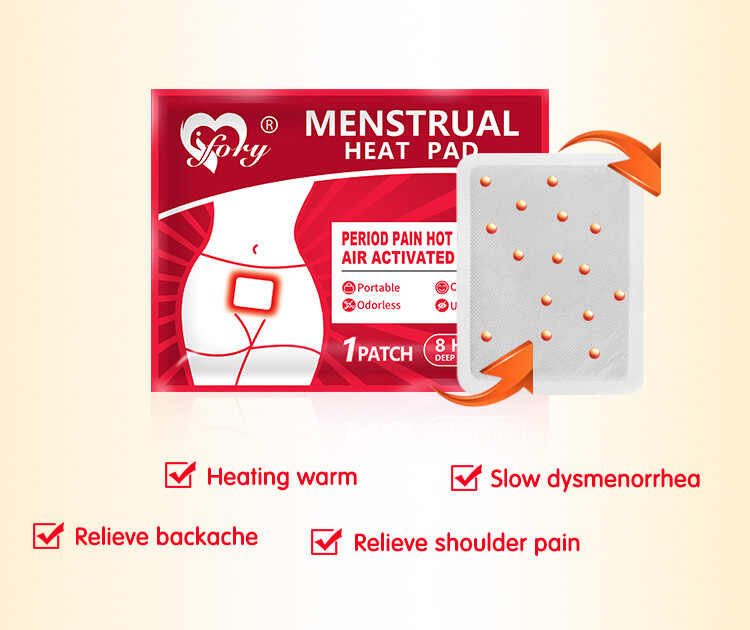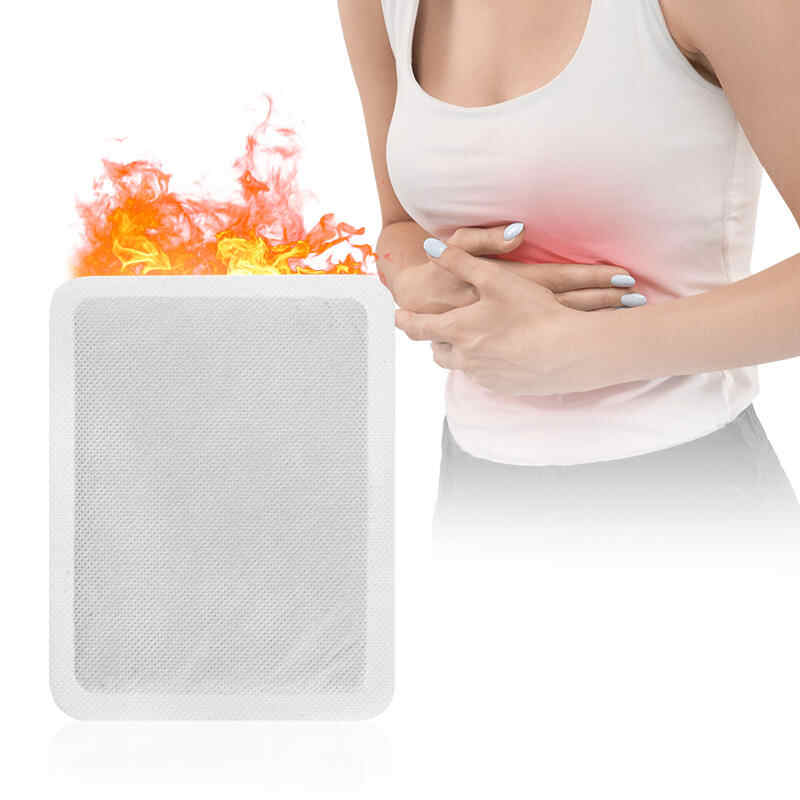How Long Does It Take to Develop a Private Label Menstrual Heating Pad?
Developing a Private Label Menstrual Heating Pad is a process that requires both strategic planning and technical precision. Many brands enter the menstrual wellness market with a vision to provide comfort, relief, and innovation—but often underestimate the time needed to create a high-quality product. From concept design and formula development to regulatory approval and packaging, every step plays a crucial role in shaping your final product.
If you are planning to collaborate with a Menstrual Heating Pad Manufacturer, Menstrual Heating Pad OEM, or Menstrual Heating Pad Supplier, understanding the development timeline helps set realistic expectations and ensures a smoother, faster product launch.
This article provides a comprehensive overview of the development stages, estimated timelines, and key factors that influence the production schedule of a Private Label Menstrual Heating Pad, helping you make informed business decisions.

1. Understanding the Private Label Menstrual Heating Pad Development Process
The development of a Private Label Menstrual Heating Pad involves several key stages:
Product Concept and Market Research
Formula and Material Development
Prototype Creation and Testing
Regulatory and Safety Compliance
Packaging and Branding Customization
Mass Production and Quality Assurance
Each stage contributes to the overall timeline and quality of the final product. On average, developing a Private Label Menstrual Heating Pad takes 8 to 16 weeks, depending on customization levels, regulatory requirements, and supplier efficiency.
2. Stage One: Product Concept and Market Research (1–2 Weeks)
Every successful product begins with a clear vision. Before production starts, you and your chosen Menstrual Heating Pad Manufacturer or Menstrual Heating Pad OEM must align on the product concept.
Key activities include:
Identifying your target audience (e.g., teenagers, working women, athletes).
Choosing your preferred heating mechanism (e.g., air-activated, battery-powered, or hydrogel-based).
Deciding between disposable or reusable models.
Benchmarking competitors to find unique value propositions.
During this stage, the Menstrual Heating Pad Supplier may share insights into current trends and materials to help refine your brand’s concept.
Estimated time: 1–2 weeks
3. Stage Two: Formula and Material Development (2–3 Weeks)
Once the concept is approved, the Menstrual Heating Pad OEM begins the technical development phase. This involves designing the heating element, selecting safe and effective ingredients, and determining product performance specifications.
For a Custom Menstrual Heating Pad, you may choose:
Heating formulas using iron powder, activated carbon, or natural minerals.
Outer materials like non-woven fabric or breathable cotton for skin comfort.
Adhesive types suitable for sensitive skin.
Why this stage matters:
The formula determines the pad’s temperature control, duration, and comfort—core factors that affect user satisfaction. An experienced Menstrual Heating Pad Manufacturer will test different material combinations to ensure balanced heat release and safety.
Estimated time: 2–3 weeks
4. Stage Three: Prototype Creation and Internal Testing (2–4 Weeks)
After developing the formula and structure, the supplier will produce prototypes for testing. This stage is crucial because it ensures the Private Label Menstrual Heating Pad performs as intended under various conditions.
Key tests include:
Temperature stability and duration testing.
Skin irritation and biocompatibility testing.
Adhesive performance over time.
Packaging durability under different temperatures and humidity levels.
As the client, you can also request samples for internal testing and feedback. Adjustments may be made based on performance or user experience results.
Estimated time: 2–4 weeks
5. Stage Four: Regulatory Compliance and Certification (3–6 Weeks)
To ensure your Private Label Menstrual Heating Pad can be legally sold in your target markets, the Menstrual Heating Pad OEM must perform compliance testing and obtain necessary certifications.
Common certifications include:
ISO 13485 for medical device quality management.
CE marking for European market access.
FDA registration for U.S. market entry.
RoHS and REACH for environmental and chemical safety.
These certifications verify product safety, consistency, and environmental responsibility. The timeline varies depending on whether the product is categorized as a medical device or wellness accessory.
Estimated time: 3–6 weeks (may overlap with other stages).
6. Stage Five: Branding and Packaging Customization (2–3 Weeks)
Once the product is finalized, it’s time to bring your brand to life. The Menstrual Heating Pad Manufacturer will collaborate with your design team to create customized packaging that aligns with your brand identity.
Options include:
Private Label packaging featuring your logo, brand name, and design.
Instruction manual design with usage and safety details.
Eco-friendly packaging materials for sustainable brands.
Custom packaging enhances your product’s market appeal and can differentiate your brand from generic products.
Estimated time: 2–3 weeks
7. Stage Six: Mass Production and Quality Assurance (3–6 Weeks)
Once all approvals are in place, mass production begins. The Menstrual Heating Pad Supplier follows strict quality control procedures to ensure each batch meets specifications.
Typical quality control checks include:
Raw material inspection.
In-process temperature consistency monitoring.
Random product testing.
Final product inspection before shipment.
A professional Menstrual Heating Pad Manufacturer will have ISO or GMP-certified quality systems, ensuring reliability and safety in every unit produced.
Estimated time: 3–6 weeks, depending on order size and complexity.
8. Factors That Affect Development Time
Several factors can influence how long it takes to develop a Private Label Menstrual Heating Pad:
8.1 Level of Customization
The more customization required—such as a unique heating formula, specific ingredients, or custom adhesive types—the longer the development time.
8.2 Regulatory Requirements
If your product is classified as a medical device, testing and certification take longer compared to a wellness-grade heating pad.
8.3 Supplier Capability
Experienced Menstrual Heating Pad OEMs with in-house R&D, testing labs, and regulatory support can significantly shorten the development cycle.
8.4 Order Quantity
Large-scale orders may require extended production times, though established Menstrual Heating Pad Manufacturers can optimize batch scheduling for faster turnaround.
8.5 Packaging Design Changes
Custom box design, printing techniques, and eco-friendly packaging materials may add extra time if not pre-approved early in the process.
9. Estimated Overall Timeline
| Development Stage | Estimated Duration |
|---|---|
| Product Concept & Research | 1–2 weeks |
| Formula & Material Development | 2–3 weeks |
| Prototype Creation & Testing | 2–4 weeks |
| Compliance & Certification | 3–6 weeks |
| Branding & Packaging Design | 2–3 weeks |
| Mass Production & QA | 3–6 weeks |
| Total Estimated Timeline | 8–16 weeks |
This means most brands can expect their Private Label Menstrual Heating Pad to be fully developed and ready for launch within 2 to 4 months, depending on the level of customization and compliance complexity.
10. How to Accelerate the Development Process
If you’re working with a professional Menstrual Heating Pad OEM, several strategies can help speed up production:
Define clear specifications early: Provide detailed product requirements and performance goals at the start.
Use existing formulations: Choosing a pre-approved base formula shortens R&D and testing time.
Select experienced suppliers: A seasoned Menstrual Heating Pad Manufacturer with integrated R&D and production saves weeks of coordination.
Approve packaging early: Finalize artwork and material selection before mass production starts.
Maintain clear communication: Regular updates between your brand and the Menstrual Heating Pad Supplier prevent delays.
11. The Advantages of Partnering with a Menstrual Heating Pad OEM
Choosing a professional Menstrual Heating Pad OEM instead of developing in-house offers key time and cost advantages:
Faster time-to-market: OEMs already have established production lines and tested formulas.
Regulatory expertise: They handle certifications and documentation on your behalf.
Scalability: The OEM can quickly adjust production to meet growing market demand.
Customization flexibility: From heat intensity to scent options, OEMs can tailor every detail to your brand vision.
These advantages make OEM collaboration ideal for brands entering the menstrual wellness market with speed, quality, and confidence.
12. Final Thoughts
Developing a Private Label Menstrual Heating Pad is not just about speed—it’s about balance between efficiency, quality, and compliance. While the average development process takes 8 to 16 weeks, working with an experienced Menstrual Heating Pad Manufacturer or Menstrual Heating Pad OEM can optimize every stage, from design to delivery.
With the right partner, your Custom Menstrual Heating Pad can meet international standards, stand out on shelves, and build a loyal customer base. Investing time in proper development today ensures long-term brand credibility and market success tomorrow.
Related Questions and Answers
Q1: Can I shorten the development time for a Private Label Menstrual Heating Pad?
A1: Yes. Working with a Menstrual Heating Pad OEM that offers pre-tested formulas and in-house design support can reduce development time by 30–40%.
Q2: How long does prototype testing take for a Custom Menstrual Heating Pad?
A2: Typically 2–4 weeks, depending on how many rounds of adjustments are required based on test feedback.
Q3: Do I need certifications for my Private Label Menstrual Heating Pad?
A3: Yes. Certifications like ISO 13485, CE, and FDA registration ensure safety and allow global market access.
Q4: What’s the minimum order quantity (MOQ) for a Private Label Menstrual Heating Pad?
A4: Most Menstrual Heating Pad Suppliers set an MOQ between 5,000–10,000 units, though it varies by customization level.
Q5: Why should I choose a Menstrual Heating Pad OEM instead of in-house production?
A5: OEMs provide advanced technology, regulatory expertise, and cost efficiency, allowing faster and safer product launches.






